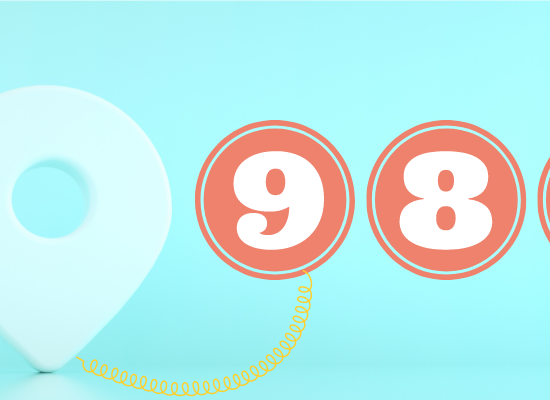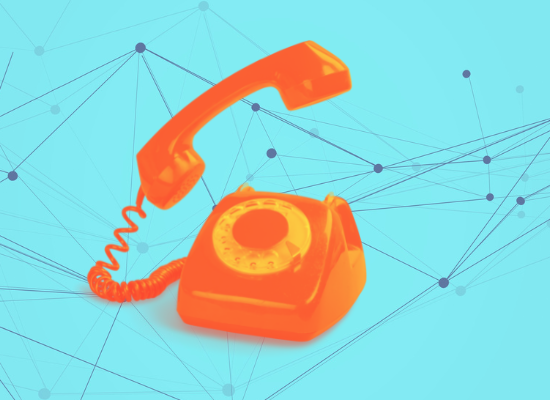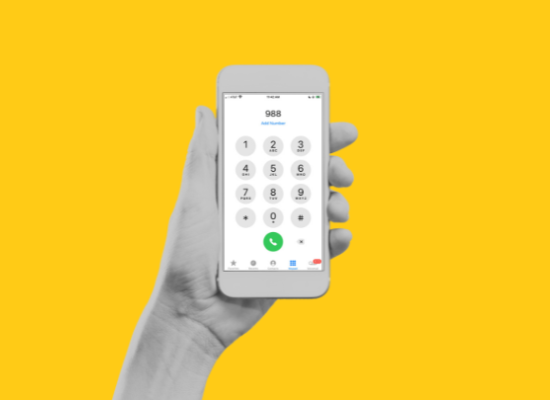
Stephanie Hepburn is a writer in New Orleans. She is the editor in chief of #CrisisTalk. You can reach her at .
Since the start of the Covid pandemic, we’ve heard mental health experts frequently discuss their concerns over isolation and the implication it might have on people’s wellbeing. In a rural state like Montana—a sprawling state defined by rolling grasslands, mountain ranges, low valleys, and water flows—the pandemic compounded an already pervasive issue.
In some parts of the state, particularly in sparsely populated central and eastern Montana, the only time many farmers and ranchers see people outside their immediate family is when they go into town. The pandemic brought their primary outlet for socialization to a screeching halt.
“It cut off any opportunity for farmers and ranchers to interact with a wider circle,” says Mary Collins, Special Populations Section supervisor at Montana DPHHS.
Montana has historically hovered at the top of suicide rates in the nation. Although, it decreased from highest to the third-highest from 2017 to 2019. American Indians in Montana have the largest rate of suicide, with 31.39 suicide deaths per 100,000 total population. During the pandemic, they also experienced a Covid incidence and mortality rate 2.2 and 3.8 times those of their White counterparts, respectively.
The suicide rate among Montanans 11-17 years old is more than twice that of the national average for the same age group.
Every two years, the Montana Office of Public Instruction administers the Montana Youth Risk Behavior Survey to students in grades 7-12. The 2019 survey revealed that 15.6% of 7th and 8th graders and 10% of high school students had made a suicide attempt. Among American Indian students, 15.4% had attempted suicide at least once in the year before the survey.
Collins says people in crisis in Montana have generally experienced a law enforcement or EMT response. “First responders take the person to the emergency room or jail,” she says. Then a community rehabilitation and treatment practitioner goes out to either location and performs an assessment.
“That’s been our default mental health system,” says Collins.
Over the past few years, there’s been a shift in the state to increase crisis services, including mobile crisis providers and crisis stabilization centers. Simultaneously, co-responder teams are also on the rise.
With 988 fast approaching, Collins says the state is rapidly trying to coordinate its crisis treatments and services. The three-digit number for behavioral health emergencies must be available nationwide by July 16, 2022. “We want to ensure Montanans have access to a comprehensive and cohesive crisis system,” she says.
One challenge is that many of the state’s crisis stabilization services and the state psychiatric hospital are in the western part of Montana. The latter is in a rural area and far from an urban hub, says Collins. The nearest city is Butte, which is 45 minutes away.
“It creates workforce scarcity for the state hospital,” she says, “and it means law enforcement are on the road for long hours transporting a person in crisis to the state hospital.”
She says police officers have long grown weary of being the default mental health provider in the state. “It’s a role they’re used to doing,” says Collins, “but they’ve been frustrated by the lack of change.” So when communities began investing in mobile crisis and co-responder teams, they received ample support from police departments.
“There’s recognition among law enforcement that this isn’t their primary role and that there are people better suited to be first responders of mental health crises,” she says.
Montana is helping fund crisis intervention and jail diversion through a two-year recurring county and tribal matching grant. In 2019, the legislature appropriated funding to expand mobile crisis services.
However, to prepare for 988, Collins notes the state needs to integrate crisis services further. That includes developing a bed registry. “We don’t have one,” she says. “As we increase our mobile crisis units, we need to find a way to coordinate services.”
Matthew Taylor, director of Network Development at the National Suicide Prevention Lifeline, notes that Montana consistently has a very high in-state answer rate for Lifeline calls. Last year, the state had a 93% answer rate, one of the highest in the nation. “That’s a testament to the hard work of our current Lifeline member centers,” he says, “and targeted funding from DPHHS to answer Lifeline calls.”
The two Lifeline call centers are Voices of Hope in Great Falls and The Help Center in Bozeman. Last month, Western Montana Mental Health Center opened a third call center in Missoula, a county in the western part of the state roughly 45 minutes from the Idaho border.
Taylor points out that in 2020, veterans made up roughly 31% of the 9,798 calls in Montana to the Lifeline number. The calls transfer to the Veterans Crisis Line, a hotline administered by the U.S. Department of Veterans Affairs.
“This past year, we experienced an increase in calls from both veterans and general citizens in Montana,” he says.
Missoula County has the largest number of Lifeline callers in the state. Taylor says this is, in part, because of proactive marketing of the Lifeline number. “It’s also because there weren’t enough coordinated community supports in Missoula,” says Terry Kendrick, program manager of Strategic Alliance for Improved Behavioral Health at Partnership Health Center.
“Residents were winding up in the emergency room or jail,” she says.
To address crisis service gaps in Missoula, five primary providers in the state and community partners developed the Missoula Strategic Alliance for Improved Behavioral Health and Well-Being. Missoula’s mayor, John Engen, and a member of the county commission sit on the alliance’s steering committee.
One of the alliance’s first steps was to analyze data from the county detention facility, the state psychiatric hospital, and emergency room visits. The data revealed an overrepresentation of Missoula County residents in the state psychiatric hospital. Also, data from a three-month period showed that nearly 40% of people in the Missoula County Detention Facility had serious or disabling mental illness. Local hospital data illustrated that more than 90% of people who went to the emergency room for a behavioral health crisis were discharged within a few hours.
“We quickly realized that to serve our residents better,” says Kendrick, “we needed to redesign our behavioral health crisis system and develop a crisis diversion program.”
In 2019, the Montana legislature passed HB 660, which provided grants for mobile crisis unit teams to treat people in mental health crisis. For each dollar in grant money awarded, the local government had to match it.
Missoula County awarded its mobile crisis unit contract to the Missoula Fire Department in 2020. The fire department subcontracted with Partnership Health Center to provide mental health professionals for its two mobile support teams.
The Missoula CARES Program went live in November and diverts people from jail and the hospital emergency room. Each mobile support team includes a licensed clinical social worker and fire department emergency medical technician. Case facilitators support the teams and connect people with services in the community.
At present, says Kendrick, 911 dispatch assigns mobile support teams as an additional unit to go out with law enforcement, ambulance, or fire services. While the teams don’t yet respond to 911 calls on their own—the program is still being fully established—they can respond to on-scene requests from emergency responders and community partners.
“We have a strong working relationship with local law enforcement, many of whom are CIT trained,” says Kendrick. “Which means they’ll reach out to us if they encounter someone in crisis.” She says the Mobile Support Team also partners with rural fire departments to extend their geographic reach to smaller communities in the county like Frenchtown.
The program’s relationship with first responders has allowed for open lines of communication. “We do check-ins to see what’s working and what’s not,” says Kendrick. They’re also developing cross-sectoral community partnerships with local homeless shelters, outreach teams, and outdoor safe spaces.
“We want people to call us before someone is in an acute crisis,” says Kendrick. “They can call us for a dispatch, and we can help.” The mobile support teams also routinely visit shelters to offer their services.
Kendrick points out that to maximize the crisis service, 911 dispatch and first responders must have clear protocols for when they reach out to mobile support teams. The program’s law enforcement liaison, Sergeant Ben Slater, has developed “good, better, best” protocols for the police department to use the Mobile Support Team.
Similarly, to prepare for 988, Montana also needs to strengthen collaboration between 911 dispatch centers and its Lifeline crisis call centers. The state is a recipient of a Vibrant Emotional Health-Lifeline 988 planning grant, a project that gives technical assistance across a range of topics relevant to 988 implementation. This includes helping crisis centers strengthen relationships and develop resource-sharing agreements with 911 centers and vice versa.
Matthew Taylor says 911 and 988 call centers should develop protocols on what behavioral health questions 911 dispatch should ask callers and how to ask them. “Dispatchers need to know what keywords to listen out for,” he says. Having stronger partnerships with Lifeline-988 crisis centers will prepare 911 dispatchers to move appropriate calls to a 988 center.
“Lifeline-988 centers are highly skilled at de-escalating mental health crisis calls, and as a result, law enforcement and EMS response typically won’t be needed.”
Western Montana Mental Health Center is a critical part of the state’s 988 conversation. The integrated community-based mental health center launched the state’s third Lifeline member call center on April 16.
The mental health center currently covers 17 counties with numerous crisis services, including a crisis stabilization unit, outpatient therapy, medication management, adult day treatment, group homes, and patient-aligned care teams. The WMMHC crisis stabilization unit is within walking distance of the new Missoula CARES Program.
In many ways, Montana is a small town, says Kari Auclair, area director at WMMHC. She points out that behavioral health and 988 stakeholders already know one another, making partnership and collaboration easier. “We understand what we’re trying to do with 988, where we’re coming from, and what we’re aiming for,” she says.
“The thread that pulls us together is that we have a common objective, and that’s bigger than any of us individually. Our goal is to meet people where they are.”
However, meeting people where they are is more complicated than it sounds. Montana is the fourth largest state in square miles and the eighth least populous state. Reaching people in rural areas has been incredibly challenging.
Auclair shares the story of a man in crisis who needed transport to the state hospital. Because his rural community had one law enforcement officer, a reserve officer was assigned to transport him. “The drive took sixteen hours,” she says, “taking the officer out of his community for nearly two days.”
That’s why WMMHC partners with the Western Service Area Authority. The advisory group puts together two-person teams of certified behavioral health peer support specialists and volunteer first responders like EMS or EMT to provide mobile support in the rural landscape, particularly outside the more densely populated Missoula area.
The new call center will tap into this resource, says Auclair, dispatching teams in hard-to-reach areas to provide an in-person response when needed. From the field, mobile response teams, including PACT teams, can pull in additional experts through telehealth, like a consultation with a psychiatrist. “It’s the one silver lining of the pandemic,” says Auclair, “It catapulted us into helping people outside of a traditional office setting.”
Telehealth has the potential to bypass many of Montana’s geographic challenges. Still, there are hurdles. Some places in the state have what’s called “blank areas” with no mobile coverage. Auclair points out that providers will drive where they can to improve the connectivity. “We’re just making it work,” she says.
Auclair says the state is moving toward crisis response cohesion. “We’re really coming into our own,” she says, “and there are community partners we can rely on—people who, like us, are working for the better of all.”









